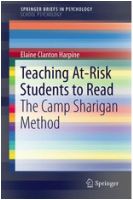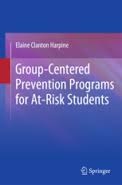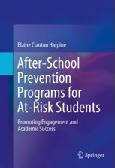Question #3: What is the difference between Camp Sharigan and the Reading Orienteering Club? Does my child need to attend both?
Camp Sharigan is a 10-hour, one-week program. The Reading Orienteering Club is a year-long after-school program. Both programs meet for 2-hour sessions. Both use 6 different teaching methods and 14 therapeutic interventions, and both programs stress phonemic awareness (identifying letter sounds) through vowel clustering. Vowel clustering is a method that teaches children to break words down into letter sounds or phonemes and then put those sounds back together as words to be read and pronounced correctly. Vowel clustering does not use memorization or (old style) phonics rules. Children study the letter sounds in vowel clusters—meaning that they study all of the sounds for a vowel at one time. For example, there are seven different sounds used by the letter A, and 22 different letter combinations used to make these sounds. Studying vowel sounds in a cluster helps train the brain to organize the sounds.
They are both group-centered prevention programs that fully use group interaction and cohesion. Both programs feature workstations and individual rotation within the group structure. Camp Sharigan has 10 workstations and the Reading Orienteering Club has eight. The difference lies in the intensity of the year-long after-school program. Neither program stops with just phonemic awareness; both programs also stress phonological awareness (the ability to work with letter sounds). It is not enough to merely identify phonemes. Children must be able to distinguish between similar and dissimilar phonemes, separate words into syllables, match sound vs. spelling, blend sounds, and manipulate sounds to form new words. We play a game called “add a letter/take away a letter.” The children add and take away letters to make new words and sometimes even change the letter sounds being used. By “playing with words,” children learn that it is the way letters are combined in a word that produce the pronunciation of the word. Both programs also stress hands-on learning, oral reading, spelling, vocabulary building, dictionary skills, comprehension building skills, letter recognition and handwriting skills, reading fiction and non-fiction, story writing, fluency, and social skills in the classroom. Fluency is taught in both programs through oral reading as a puppeteer and puppet reader. The Reading Orienteering Club also uses a make-believe TV show where the children research and read the report that they have written on the subjects being studied.
The group-centered nature of the program provides the learning atmosphere; the workstation style hands-on curriculum emphasizing creative art therapy provides the curriculum. The counseling component of the program helps children learn how to work together cooperatively, make decisions, solve problems, and rebuild their self-efficacy (the child’s belief that they can learn to read).
The main difference between the two programs is the length of time. The Reading Orienteering Club provides help for students who need more than a mere one-week, 10-hour program. Both programs use intrinsic (internal) motivation and strive to return children to the classroom so that they can be successful.



 RSS Feed
RSS Feed
